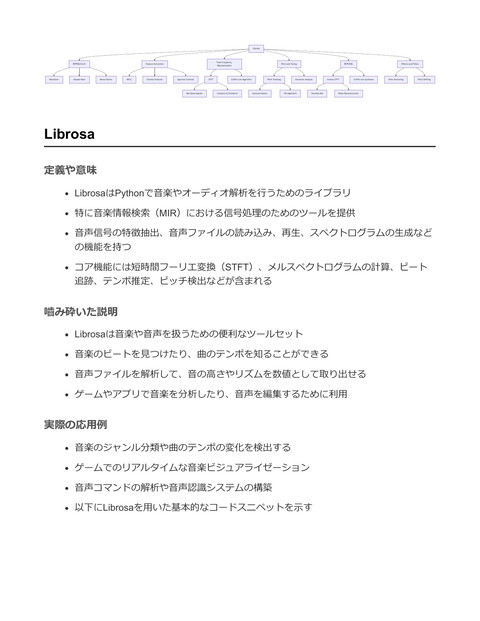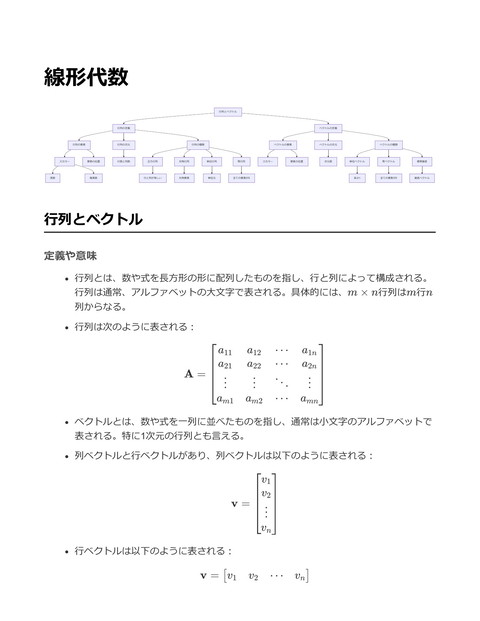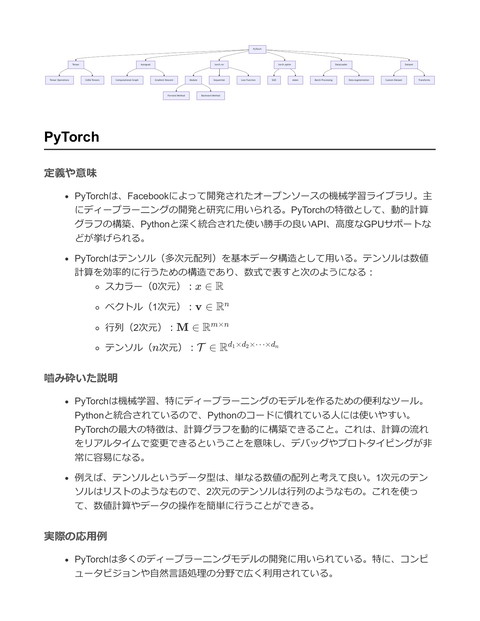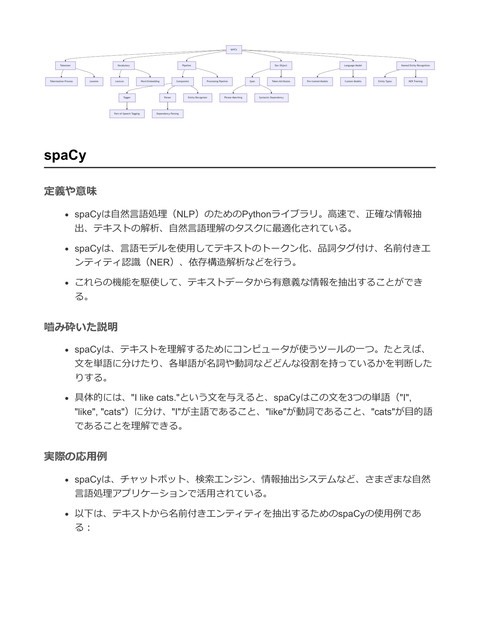Attention_Is_All_You_Need_Summary
2.9K Views
September 12, 25
スライド概要
プロンプトテスト用
医学生。AIや業務・学習効率化に興味あり。
関連スライド
各ページのテキスト
Attention Is All You Need A. Vaswani et al. の論文解説 | 2025.09.12 Google Brain, Google Research, University of Toronto
Agenda 01 論文の概要と背景 02 Transformerモデルのアーキテクチャ 03 Attentionのメカニズム 04 自己注意(Self-Attention)の優位性 05 実験結果と考察 06 結論と今後の展望 Google Brain, Google Research, University of Toronto | Attention Is All You Need
1. 論文の概要と背景
従来の課題:系列変換モデルの限界 主要なモデル(RNN, LSTM, GRU)は、データを逐次的に処理する再帰的な構造を持つ。 この逐次的な性質が、計算の並列化を妨げ、特に長い系列データでの訓練を困難にしていた。 系列が長くなるほど、遠い位置にある情報間の依存関係を学習することが難しい(長期依存性の問題)。 Attentionは導入されていたが、主にRNNと組み合わせて使用されていた。 Google Brain, Google Research, University of Toronto | Attention Is All You Need
We propose a new simple network architecture, the Transformer, based solely on attention mechanisms, dispensing with recurrence and convolutions entirely. Google Brain, Google Research, University of Toronto | Attention Is All You Need
本論文の貢献:Transformerの提案 再帰的構造(Recurrence)と畳み込み(Convolution)を完全に排除。 Attentionメカニズムのみで構成される、シンプルかつ強力なアーキテクチャを提案。 大幅な並列処理を可能にし、訓練時間を劇的に短縮。 機械翻訳タスクにおいて、既存のアンサンブルモデルさえも上回る最高性能(SOTA)を達成した。 Google Brain, Google Research, University of Toronto | Attention Is All You Need
2. Transformerモデルのアーキテクチャ
全体像:Encoder-Decoderモデル 標準的な系列変換モデルであるEncoder-Decoder構造 を踏襲。 Encoder(左): 入力系列を連続的な表現に変換する 。 Decoder(右): Encoderの出力を元に、出力系列を1 トークンずつ生成する。 両者とも、再帰構造の代わりに「自己注意(SelfAttention)」と「順伝播型(Feed-Forward)」ネットワ ークを積み重ねた構造を持つ。 Google Brain, Google Research, University of Toronto | Attention Is All You Need
主要コンポーネント Encoder Stack Decoder Stack 接続と正規化 N=6個の同一レイヤーを積層。各 レイヤーは「Multi-Head SelfAttention」と「Position-wise Feed-Forward Network」の2つの サブレイヤーで構成される。 N=6個の同一レイヤーを積層。 Encoderの2つのサブレイヤーに加 え、Encoderの出力を参照する「 Encoder-Decoder Attention」を持 つ3層構造。 各サブレイヤーの接続には Residual ConnectionとLayer Normalizationを適用し、勾配消失 を防ぎ学習を安定させる。 Google Brain, Google Research, University of Toronto | Attention Is All You Need
位置情報の埋め込み:Positional Encoding Transformerは再帰構造を持たないため、系列内のトークンの順序情報をモデルに与える必要がある。 入力Embeddingに、トークンの「位置情報」を持つベクトル(Positional Encoding)を加算する。 本論文では、異なる周期を持つsin関数とcos関数を利用した固定値を使用。 PE(pos, 2i) = sin(pos / 10000^(2i/d_model)) PE(pos, 2i+1) = cos(pos / 10000^(2i/d_model)) これにより、モデルはトークンの相対的な位置関係を学習しやすくなる。 Google Brain, Google Research, University of Toronto | Attention Is All You Need
3. Attentionのメカニズム
Attentionの基本概念 Attentionは、Query(Q)とKey-Value(K-V)ペアをベクトル空間で関連付け、出力を計算する関数と表現できる。 出力は、Valueベクトルの重み付き和で計算される。 各Valueへの重みは、Queryと対応するKeyの類似度によって決定される。 直感的には、ある情報(Query)に関連する情報(Key)に「注意」を向け、その情報の内容(Value)を重点的に取得する メカニズム。 Google Brain, Google Research, University of Toronto | Attention Is All You Need
Scaled Dot-Product & Multi-Head Attention Scaled Dot-Product Attention: Transformerで利用される基本単位。QueryとKeyの 内積で類似度を計算し、√d_k でスケーリングする。 Attention(Q, K, V) = softmax( (Q * K^T) / √d_k ) * V Multi-Head Attention: Attentionをh回並列実行。Q, K, Vを異なる線形射影 で変換し、異なる表現部分空間で情報の関連性を捉え る。 これにより、モデルはより豊かな表現を獲得できる 。 Google Brain, Google Research, University of Toronto | Attention Is All You Need
Transformerにおける3種類のAttention Encoder Self-Attention Masked Decoder Self-Attention Encoder-Decoder Attention Encoder内で、入力系列内の全単語 間の関連性を計算する。文の内部 構造を捉える。 Decoder内で、出力系列の各位置が それより前の位置のみを参照する ようにする(未来の情報をマスク )。自己回帰性を担保。 Decoderが、Encoderからのどの入 力単語に注目すべきかを決定する 。翻訳の対応付けなどを行う、最 も標準的なAttention。 Google Brain, Google Research, University of Toronto | Attention Is All You Need
4. 自己注意(Self-Attention)の優位性
各レイヤータイプの計算効率比較 (Table 1) レイヤータイプ 層あたりの計算量 逐次的な操作の最小数 最大パス長 Self-Attention O(n^2 * d) O(1) O(1) Recurrent (RNN) O(n * d^2) O(n) O(n) Convolutional (CNN) O(k * n * d^2) O(1) O(log_k(n)) Self-Attention (Restricted) O(r * n * d) O(1) O(n/r) Google Brain, Google Research, University of Toronto | Attention Is All You Need
なぜSelf-Attentionは強力なのか? 計算の並列化: 逐次的処理がO(1)であり、層内の計算を完全に並列化できる。RNNのO(n)と比較して圧倒的に高速。 長期依存の学習: 任意の2つのトークン間のパス長がO(1)と最短。これにより、遠い位置にある単語間の依存関係も直接的に 捉え、学習しやすくなる。 モデルの解釈性: Attentionの重みを可視化することで、モデルが文のどの部分に注目しているかを分析でき、解釈可能性の 向上に繋がる。 Google Brain, Google Research, University of Toronto | Attention Is All You Need
5. 実験結果と考察
機械翻訳タスクでの成果 (WMT 2014) 英語→ドイツ語翻訳 (EN-DE): BLEUスコア 28.4 を達成。既存の最高性能モデル(アンサンブル含む)を2.0以上も上回り、新たなSOTA(State-of-the-Art) を樹立。 英語→フランス語翻訳 (EN-FR): BLEUスコア 41.8 を達成。単一モデルとして当時のSOTAを更新。 特筆すべきは、これらの成果を既存モデルの数分の一という非常に少ない訓練コスト(8 P100 GPUsで3.5日)で達成した 点。 Google Brain, Google Research, University of Toronto | Attention Is All You Need
モデルのバリエーション分析 Attention Head数(h): 多すぎても少なすぎても性能は劣化。h=8が最良の結果を示した。 Keyの次元数(d_k): 小さくすると性能が低下。類似度計算が単純な内積だけでは不十分で、ある程度の表現力が必要である ことを示唆。 モデルサイズ: モデルが大きいほど性能は向上する傾向が見られた。 正規化: Dropoutは過学習の防止に非常に有効であった。 Positional Encoding: 学習可能な埋め込みと、論文で提案されたsin/cos関数でほぼ同等の結果。汎化性能を考慮しsin/cos 版を採用。 Google Brain, Google Research, University of Toronto | Attention Is All You Need
他タスクへの汎化性能:英文構文解析 特定のタスクへのチューニングをほとんど行わずに、英文構文解析タスクへ適用。 小規模なデータセット(WSJ 4万文)のみの学習でも、当時の強力なベースラインであるBerkeleyParserを上回る性能を達成 。 大規模な半教師ありデータを用いることで、RNN Grammarを除く既存の全モデルを上回るF1スコア92.7を記録。 Transformerが特定タスクに特化したアーキテクチャではなく、汎用的な系列変換モデルとして非常に優れていることを証 明した。 Google Brain, Google Research, University of Toronto | Attention Is All You Need
6. 結論と今後の展望
We are excited about the future of attention-based models and plan to apply them to other tasks. Google Brain, Google Research, University of Toronto | Attention Is All You Need
まとめと結論 本研究は、Attentionのみに基づいた初の系列変換モデル「Transformer」を提案した。 再帰構造を排除することで、訓練の大幅な並列化と高速化を実現。 機械翻訳タスクで新たなSOTAを達成し、その後の自然言語処理研究にパラダイムシフトをもたらした。 Self-Attentionは、計算効率、長期依存の学習、汎化性能の面で、RNNやCNNに対する強力な代替手段であることを示した 。 Google Brain, Google Research, University of Toronto | Attention Is All You Need
今後の展望 テキスト以外のモダリティ(画像、音声、ビデオ)への応用。 画像のような巨大な入出力を効率的に扱うための、局所的・制限的なAttentionメカニズムの調査。 生成プロセスをより逐次的でなくす研究。 (本論文の発表後、これらの展望はBERT, GPTシリーズなど数多くの後継モデルによって実現されていく) Google Brain, Google Research, University of Toronto | Attention Is All You Need





